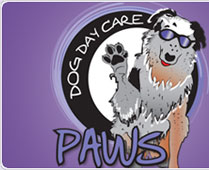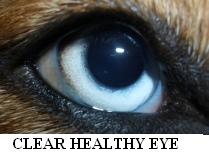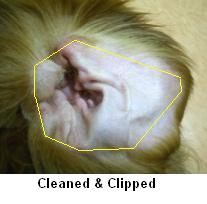How to Groom A Dog
Dog Grooming Basics
Frequent and thorough Pet Grooming not only keeps your dog healthy and happy, but it helps to identify potential health risks so you may have them treated before serious problems develop. Regular Grooming is also the best way to prevent prevent yeast infections and skin irritations than can be caused by excessive matting, ear infections that can be caused by the buildup of wax or excessive hair around or inside the ear canal, periodontal disease from uncared for teeth and ingrown nails or sore pads that can be caused by overly long toe nails.
The first step in preparing to Groom a dog is to insure that you have to proper tools available to complete the job. This would generally include, cotton balls, Q-tips, slicker brush, de-matting comb (for long haired breeds), tooth brush with dog toothpaste, quality shampoo and conditioner, towels, nail trimmers, scissors and perhaps a muzzle depending upon the temperament and disposition of your dog.
Always ensure that you brush your dog thoroughly to remove any loose or dead undercoat, matting or foreign debris from the coat before wetting it.
If you are finding it difficult to remove matting by brushing alone, you can take a pair of scissors and slide one half of them between the mat and the skin and work up and away from the body in a saw like motion to cut the mats into small pieces that you can then brush them out. If you are still unable to remove the matting then you may have to cut them out entirely, by pinching the mat between you thumb and index finger pulling it out away from the body and using the scissors to cut as close to the bottom of the mat as possible. Remember that if you do not remove the matting before wetting your dog they will swell and become completely unmanageable. If matting is allowed to remain on the dog for prolonged periods of time, bacteria will begin to grow between the matting and the skin resulting in yeast infections as well as a host of other problems. For Short-haired dogs you will more than likely be fine using a curry comb or groomers glove, while medium coated dogs, such as Australian Shepherds, Golden Retrievers etc will take more specialized Grooming tolls like an undercoat rake, pin brush and coat conditioners.
Once you have thoroughly brushed out the coat its time to complete the rest of the pre-bath grooming tasks. Use the guidelines below to assist you.
![]() Eyes
Eyes
You want to first do a quick inspection of the eyes to insure that they are clean, clear and that there is no irritation present. You are also looking for unusual discharge, excessive squinting, redness etc. If the dog is getting older you may notice the lens the eye has or is beginning to have a cloudy or grayish appearance to it.
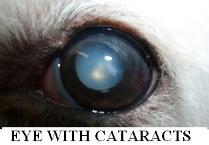
One way to save yourself some time is use blunt tipped scissors to remove the gunked up hair from the lower inside corner of the eyes, this will also help to prevent it from building up there in the future.. There are also special products available on the market that are designed specifically to remove tear stains from white coats, they are not expensive and when used properly are highly effective.
![]() Ears
Ears
This is one area that as a Groomer I feel is overlooked way to often, ears infections are not only painful for your dog but expensive to fix and generally entirely preventable with a little home maintenance or grooming.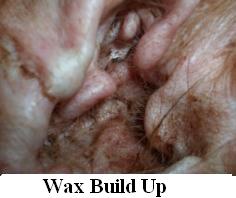
Poodles, Shih Tzu’s, the Maltese and similar breeds have a problem with the hair actually growing deep inside the ear canal, this hair then gets coated in wax, as the old hairs detach from the roots the are sealed in place by the wax and new hairs grow in, the process is repeated until a waxy, hairy, ear infection breeding ear plug is in place. At this point, it is a very unpleasant and painful experience for the dog to remove but one that has to be done none the less and the only way to accomplish this is to pull it slowly piece by piece with hair powder and forceps or tweezers.. Again this could have been prevented with regular grooming or even precursory maintenance. Prior to the ears actually getting to this point you would want to examine the ear 
This process generally involves applying a few drops in the ear, massaging it for 30-45 seconds and then using cotton balls and Q-tips to wipe clean the inside of the ear. You may also use a couple of drops of rubbing alcohol as it will dry water from the ear as well as kill bacteria, yeast and mites.
Fuzzy hairs growing inside the ear canal can be plucked out by hand or with forceps and tweezers. You should also trim the hairs around the bottom of the ear and the ear canal opening as well as the hairs on the underside of the ear flap to allow adequate air circulation preventing the creation of a hot, damp place in which bacteria and other nasty's thrive.
![]() Teeth
Teeth
It's a fact that roughly 80% of dogs have some form of periodontal disease. A dog with poorly maintained teeth is at a higher risk for kidney or liver problems as they will continue to ingest and digest plaque from their teeth.
You should try to brush your dogs teeth at least twice a week using a dog tooth paste, avoid using any human variety toothpastes as they are generally toxic to dogs. There are a number of products and tools available on the market to make this a fairly straight forward and painless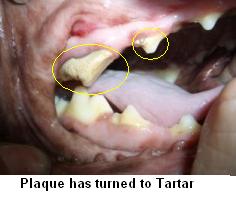
![]() Nails and Feet
Nails and Feet
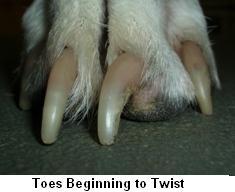

The pads and the feet are another area that tends to get overlooked when grooming a dog. During the grooming process you should check the pads for any cracks, tearing or sore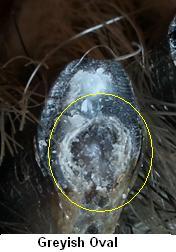
 How To Give a Dog a Bath
How To Give a Dog a Bath
Alright were ready for the bath, depending upon your dogs disposition and fondness for or lack of fondness for the bath you may need to use a muzzle, or have someone assist you. Your dog should be naked (ie collarless for the bath), as it is not uncommon for the dye in the collar to bleed out onto your pet skin and coat, also collars left on a pet that is not dry can cause sores or other irritation to the neck area.
Start at the head working your way to the tail and thoroughly wet down the coat, for dogs with double coats you may need to use a pressurized hose attachment and place it directly on the coat to force water through the coat.
Begin shampooing from the neck moving downwards always working the lather away from the pets, mouth, ears and eyes. When washing the face it is best to do it into two parts, use your index finger to pick up a little lather from the portions you have just washed and apply it below the eyes and gently scrub it in, covering the outside of the cheeks, muzzle and chin, and immediately rinse to prevent your dog from licking or ingesting the soap. Now tilt the dogs head skyward and to the same to the top of the skull, above the eyes and around the ears, once complete begin rinsing the entire dog from head to tail ensuring that you do not get any water into the actual ear canal ( you can place cotton balls in the ear to prevent this). Ensure that you remove all soapy residue from your pets coat, any areas that you miss are likely to cause hot spots (an itchy, irritating, red bald spot).
At this point towel dry the dog to the best of your ability and begin blow drying, generally this is done by using a brush against that lie of the coat with one hand and a blow dryer in the other. Ensure that your dogs coat is completely dry as spots forgotten can lead to infections, hot spots, or matting and tangles.
Additional Dog Grooming Tips
Grooming your dog on an elevated surface such as an old dinner table or counter can reduce the stress on your back, always ensure that you have a non skid mat on the surface to prevent your dog from falling and potentially injuring themselves.
-
Also never leave a dog unattended while on an elevated platform. If you are going to blow dry your dog consider using a commercial quality dog dryer, a hand held human dryer could take up to 4 hours to completely dry a large double coated dog. The temperature settings for human hairdryers are considerable hotter than those used for drying pets so there is a risk of burning their skin if you are not careful.
-
It is also a myth that there is a huge difference between the PH of human skin and that of a dog, this is a myth that the pet industry uses to their advantage. It is safe to use human shampoo on a dog, without the risk of causing any detrimental health effects. The one thing to remember that anything you put on your dog, he runs the risk of ingesting if you are not careful, ensure that you completely rinse the dog after shampooing and take special precautions around the eyes and mouth.
-
Do not get shampoo in your dogs eyes, It can seriously irritate them, one way to avoid this is to put shampoo on your hands first and gently work into the areas around the eyes instead of coming straight out of the bottle. You can also use a human baby shampoo diluted at a ratio of 4:1 all over your dog and the risk for eye irritation is eliminated.
-
Don’t be shy about cleaning every area of your dog, this includes the penile area, around the anus and vagina as well. If you intend on washing or grooming your dog ensure that you groom the whole dog to include their privates
-
Avoid bathing your dog to often, more than once a week as it deprives their skin and coat of the natural oils that protect it. If you need to do a quick clean up use a spray bottle diluted 10 to 1 and spray, sponge and rinse the dirty areas.
